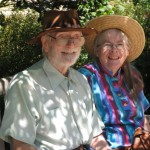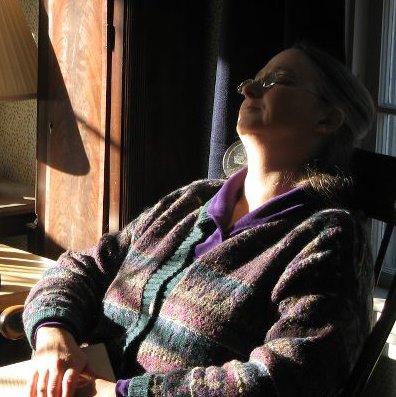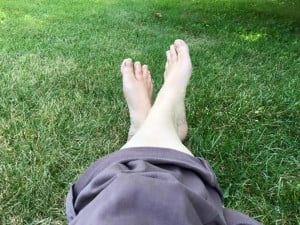All posts in this series:
Part I: Getting (and Losing) That Old Time Religion
Part II: Coming Home
Part III: The Fool’s Journey
Part IV: The Underworld
Part V: Seven of Cups
Part VI: A Letter and a Kiss
Part VII: Morticia Loves Gomez
Part VIII: Nora
Part IX: Felicia Hardy and the Tower of Babel
Part X: When Babel Fell
Part XI: Community 2.0
Part XII: This Forgiveness Stuff
When I first became Pagan, I was extremely idealistic about Paganism and what it could do for the world. I was profoundly affected by vision’s like Starhawk’s ecofeminism–the idea that most of our present ills are a result of a patriarchal world view that objectified women and the planet, sacrificing things of spiritual and lasting value for short term gains for the few, those few being mainly white guys in suits. Pagans were going to resacralize the earth, renew real respect between genders and races, and build a new ideal based on community. And our ideas were going to spread, because anyone from the mainstream culture who glimpsed the beauty in our relationships with one another was going to want to sign on.
Do I hear snickers from the back row?
For those who know me now, and who are aware of my ready acceptance of modern scholarship on Wiccan and Pagan history–that we do not trace our lineages unbroken to the paleolithic era, that there is no evidence for a universal peaceful matriarcy in human history, etc–I don’t want to come across as more cynical than I am. Though I no longer believe in that mythic neolithic feminist utopia of peaceful goddess worshippers living in a perfect balance with nature, I do think that equality between the sexes has peaked and ebbed throughout history, and that gender equity isn’t a recent invention, with no precedents in the ancient world. I do think that communal values are part of some cultures more than others, and that patriarchy, amoral economic competition, and lack of value for the earth and the environment are not historical inevitablities that can never be changed. If I am less starry-eyed than I was once, and see the struggle to change humanity as more difficult and complicated than I once thought it would be, I still think that cynicism accomplishes nothing of lasting good, either for the cynic or his world.
Paganism helped me to become a Fool–and in the spiritual world, that’s a good thing. Most of us stay home, lock the doors, and hope for the best for ourselves individually. The Fool sets out boldly into the world, and even if it looks as if his journey is hopeless, it really is better to be The Fool, even if sometimes you get a little battered on your journey… Like a Fool, then, I set out optimistically, believing that magical possiblities were all around me.
There was so much to know! And I wanted to learn everything, read everything–I think I kept our local bookstore in business single-handedly, through special orders alone. I had to read about herbs, of course (something I’d been facinated by as a kid) and to begin stocking a kitchen full of simples: peppermint for nerves or indigestion, lavender to disinfect wounds, sage to dry up post-nasal drip… and so on. And I sent away for mail order Wicca classes–incredible horse hooey, I ultimately decided, but only after devouring the first wave of assigned readings and diligently working the assigned “psychic development exercises” (which were not such horse hooey, overall). I read garbage about ancient Celts, antiquated archeologicial writings about matriarchies in Crete, Charles Godfrey Leland’s Aradia from a cheap little feminist Wiccan booklet full of footnotes about what the text really meant, and the occult fiction of Stewart Farrar, on loan from a friend.
No one who has entered Paganism since the advent of the Web can have the slightest notion what all this was like, though all the old-timers will remember vividly. There was no Amazon.com, no Witches’ Voice with thousands of essays and links to resources. I can’t describe my joy when I discovered that Kirk possessed a stack of a dozen tattered copies of Circle Network News, complete with the sappy drawings of willowy goddesses that characterized Pagan artwork at that time.
Every now and then, a Pagan friend with access to computers would print out (in tiny dot-matrix letters) a few gleanings from Fidonet: lyrics to songs that would one day be famous, scraps of rituals, arguments between groups over proper Wiccan ethics or circle ettiquette… you never knew what you would wind up with, but over the creaky modem connections of the day, you grabbed what you could, and strained your eyes looking for something of value.
Ultimately, Kirk, Doug, and I formed the core of a boot-strapped coven and study group. We pooled our information, shared our books, chants, and rituals, and taught one another anything we happened to pick up from whatever source. These days, a determined seeker can find more useful information online in an afternoon than Kirk, Doug, and I worked out over the course of a year or more of earnest research. But the advantage to a modern seeker is not as clear cut as you might suppose. Because there was so little information available, we had to read widely, in history and comparative religion and women’s studies and ecology… and when we gleaned a few shards of Wiccan writing, we could never know much about the source they came from. Every piece of information had to be weighed, tested, experimented with before adding it to our practice. Since we had no ready-made Book of Shadows, we were not tempted to accept anything at face value. Everything was tested, compared with what we already knew, or–best of all–made to work through trial and error, sometimes in ways the original liturgists would never have foreseen.
The Coven on Wheels (COW for short, in a tip o’ the hat to the Vermont dairy industry) had almost no formal liturgy, and that stolen and modified from a variety of sources. But what it lacked in ritual trappings, it made up in groundedness and integrity. Because we were always experimenting to see what worked, we became deadly honest with one another about what wasn’t working, and we altered it or abandoned it. We also became better and better at taking risks in front of each other–there’s nothing like waving your arms in the air, breathing funny, and intoning Hebrew names in front of someone to build a sense of trust! Seriously, it took real trust to set aside our worries that we were making idiots of ourselves. But by doing so, we built up quite a fund of intimacy… as we did working in Kirk’s woods to clear land and move stones for outdoor ritual space, and camping together around a bonfire at the end of the day.
On a practical level, we gradually pieced together ways of casting a circle, raising energy, entering trance, and learning about and communing with our gods that have stood the test of time; each of us has gone on to some sort of further magical training (Kirk in so many traditions even he has a hard time counting them all) but I think we would each tell you that what we worked out together was at least the equal of what we learned later in formal traditions. Trial and error, combined with common sense and a willingness to do our homework, turned out to be a pretty effective set of teachers.
At the time, I think we all felt a bit apologetic about the ways our practice was home-grown… and I know we were all pleasantly surprised by how favorably it compared with other, more established traditions, when eventually we went out in the wider world of Paganism and Wicca.
Picture this: the three of us have registered together for the EarthSpirit community’s premier Pagan gathering, Rites of Spring. Knowing, as we do, that many groups will be present in their ceremonial best, with matching robes, cloaks, banners, and occult jewelry, we decided that we, too, would put on a bit of a show, and we’ve purchased our own ritual regalia: matching sunglasses, and the blue Ben and Jerry’s ice cream tee shirts, proudly emblazoned with our coven emblem, the black and white Holstein cow. The three of us can hardly keep from laughing out loud, striding through camp in our ceremonial finery.
Rites of Spring was a high point in my Fool’s journey. When not giggling with my buds, I got my first taste of the wider Pagan world. I learned a dozen new chants. I bought my first piece of Pagan ritual gear, a crescent moon crown that was like a promise (to myself? to the Goddess?) to take my priestessing seriously, even if I kept on laughing at myself. I attended my first-ever drum circle, sweat lodge, and large public ritual.
There were moments of great beauty at that Rites. I attended my first forest wine ceremony, and loved it–the chalice going round and round the circle, with celebrants coming and going, giving thanks upon thanks with each new toast. I spent time in something that I could swear actually called itself a Crystal Teepee–a canvas-sided teepee with carefully arranged chunks of quartz crystals, ranging from fist-sized knobs of rose quartz to Thanksgiving-turkey sized geodes lined with amethyst. Supposedly all of these crystals were arranged in a pattern that optimized vibrations of peace and love; I don’t suppose I’d go near such a thing nowadays–I’m rather more sensitive to B.S. But I did spend time there during that Rites, and whether it was because of the crystals, because of the quality of the light diffusing through the canvas sides of the structure, or because of the serene hippies who went there to meditate, I found it a very peaceful place to be.
Even getting a sunburn was a delightful experience. I had carefully covered up most of my person for most of the time, but, alas, I had not thought to cover up my feet, of all things. By the second day there, I had the most amazingly red, sore feet you can imagine. But a stop at the Healer’s Hut introduced me to Ellen Evert Hopman, who set me up with some kind of greenish herbal goo that–I am not making this up–flat out cured my sunburn.
At Rites of Spring, I learned that COW was not the only group of Pagans with a sense of humor; I saw the feminine and the Goddess honored everywhere I turned; I listened to harps, drums, dijeridoos and bardic circles. And I decided that Pagans were just about the most wonderful, loving, compassionate, and enlightened people on the planet.
Perhaps you can see where this is headed? I couldn’t, of course. But such is the nature of the Fool.
(To be continued…)















